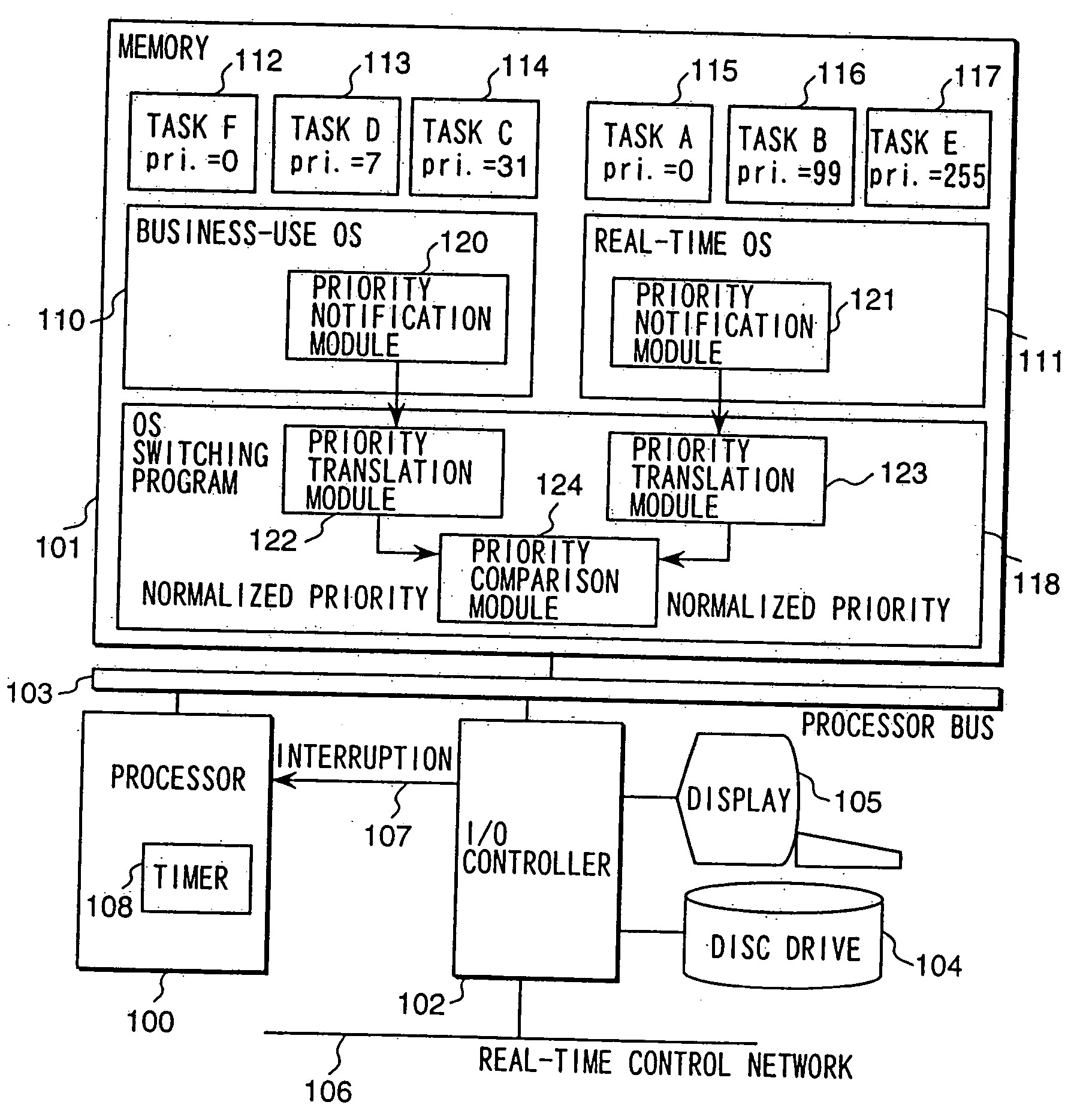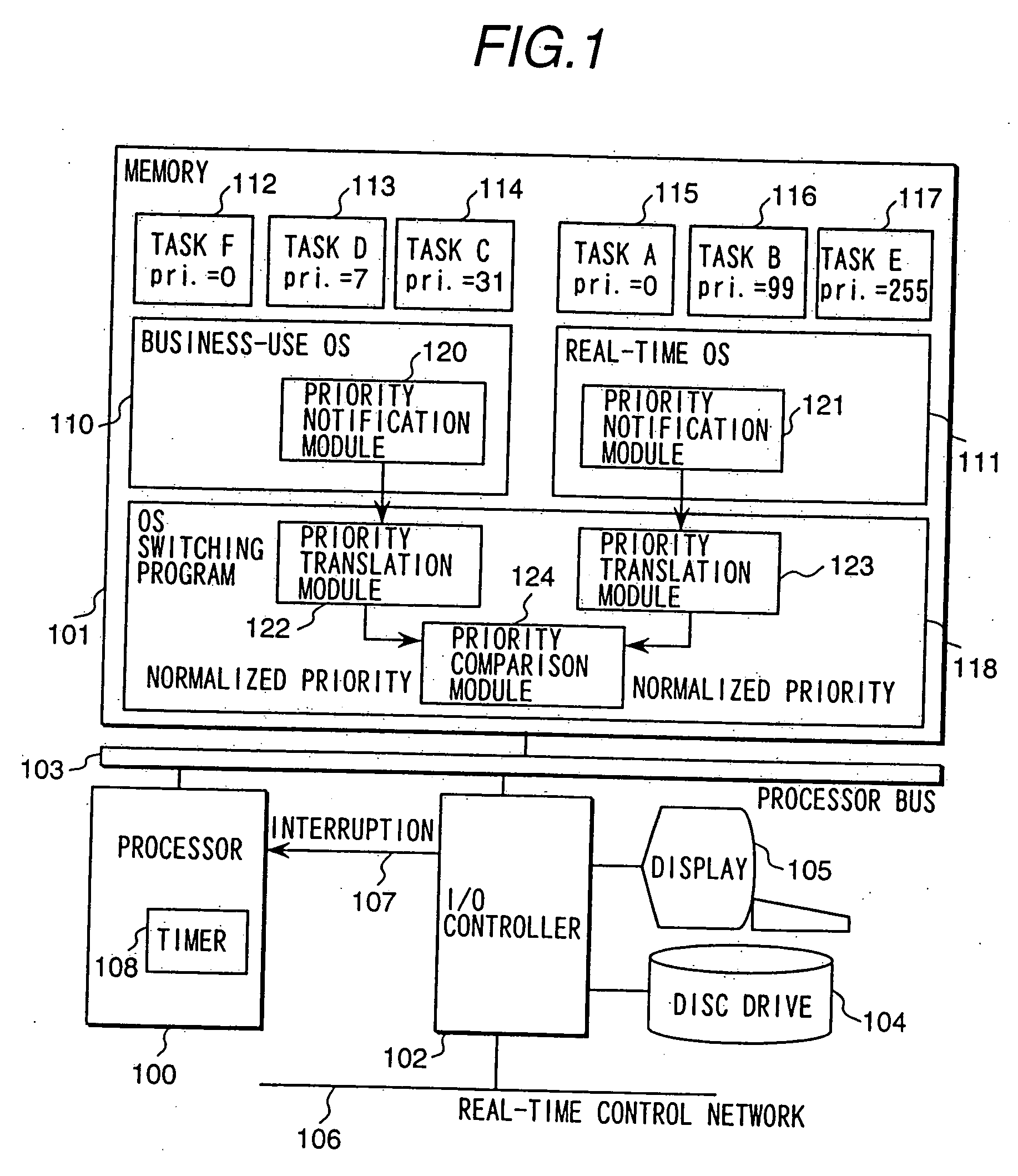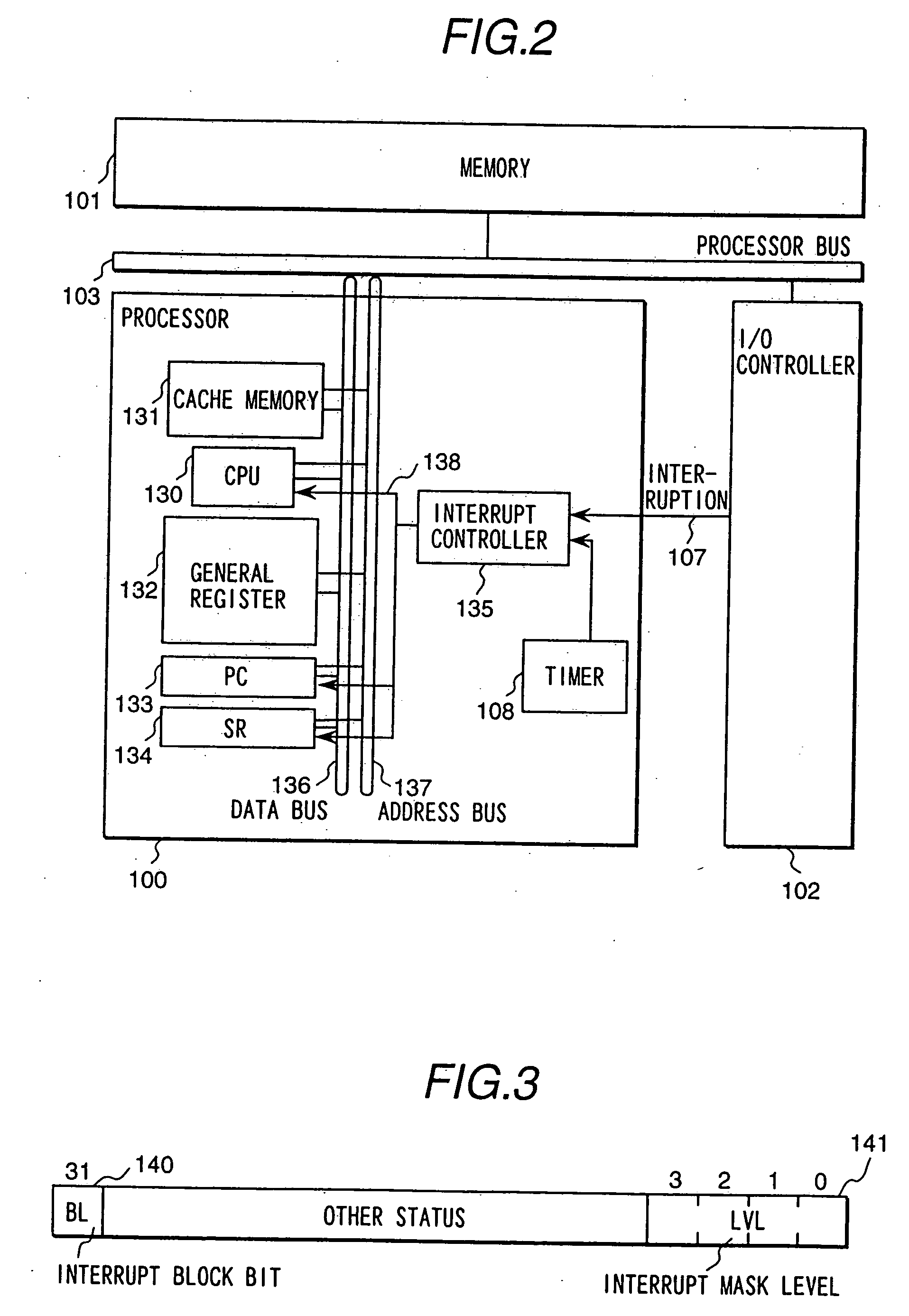Computer executing multiple operating systems
a technology of operating system and computer, applied in the direction of multi-programming arrangement, program control, instruments, etc., can solve the problem that business-use or real-time os's are incapable of additionally accommodating the priority notification process therein, and achieve the effect of enhancing the speed of task switching
- Summary
- Abstract
- Description
- Claims
- Application Information
AI Technical Summary
Benefits of technology
Problems solved by technology
Method used
Image
Examples
first embodiment
[0052]FIG. 1 shows an overall constitution of a computer practiced as this invention. The computer generally comprises a processor 100, a memory 101, an I / O controller 102, a disc drive 104, and a display 105. The processor 100, memory 101 and I / O controller 102 are interconnected by a processor bus 103. The processor 100 is implemented as a microprocessor that runs a plurality of operating systems. The memory 101 stores a business-use operating system (OS) 110, a real-time OS 111, tasks 112 through 117 performed by the operating systems, and an operating system switching program 118. These programs are read out and executed by the processor 100.
[0053] The I / O controller 102 is connected to the disc drive 104 that stores programs and data, as well as to the display 105 that provides screen displays. Where a computer for factory and plant control purposes or for built-in uses is to be implemented, the I / O controller 102 may be connected to a real-time control network 106. The real-ti...
second embodiment
[0152]FIG. 23 is a block diagram showing a typical constitution of a computer practiced as this invention. It is assumed that the business-use OS 110 and real-time OS 111 hold the priorities of their currently executing tasks (execution priorities 340 and 341). That is, under the operating systems, the task management tables 162 and 163 heading the executable task queues 150 and 151 shown in FIG. 5 hold the execution priorities 340 and 341 respectively. If a plurality of executable task queues are assigned to each priority, there is often provided a pointer or a variable; the pointer points to the location of the executable task queue having the highest priority at a given point in time, or the variable (priority-holding variable) indicates the value of the highest priority in question. If the pointer is provided, the execution priorities 340 and 341 are obtained by retracing the executable task queue from the pointer to the task management table for reference thereto; if the variab...
fourth embodiment
[0167] In the fourth embodiment, the priority translation modules 122 and 123 translate the priorities of both operating systems into normalized priorities. In turn, the priority notification modules 120 and 121 notify the priority comparison module 124 of the resulting normalized priorities representing the operating systems.
[0168] In the fourth embodiment, all interfaces between the business-use OS 110 and real-time OS 111 on the one hand and the operating system switching program 118 on the other hand are effected in accordance with normalized priorities. Each of the first through the third embodiments above provides notification of the priority of a task when that task is an executable one, and reports an idle state if there is no executable task. Such idle states as well as self-processing states of the operating systems cannot be mapped freely in the order of normalized priorities representative of the states. With the fourth embodiment, by contrast, priorities are translated ...
PUM
 Login to View More
Login to View More Abstract
Description
Claims
Application Information
 Login to View More
Login to View More - R&D
- Intellectual Property
- Life Sciences
- Materials
- Tech Scout
- Unparalleled Data Quality
- Higher Quality Content
- 60% Fewer Hallucinations
Browse by: Latest US Patents, China's latest patents, Technical Efficacy Thesaurus, Application Domain, Technology Topic, Popular Technical Reports.
© 2025 PatSnap. All rights reserved.Legal|Privacy policy|Modern Slavery Act Transparency Statement|Sitemap|About US| Contact US: help@patsnap.com



